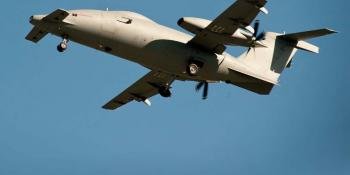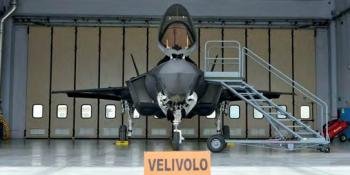Riccardo Niccoli visited Ovda Air Base in southern Israel to discover what the multinational exercise Blue Flag has to offer its participants
MILITARY EXERCISE BLUE FLAG


Every other year since 2013, the Zroa Ha’Avir VeHahalal (Israel Air and Space Force or IASF) has run Exercise Blue Flag from its Ovda Air Base in the Negev Desert.
In designing Blue Flag, the IASF drew on experience gained taking part in similar events around the world, such as Red Flag in the United States, Spring Flag and STAREX in Italy, and Anatolian Eagle in Turkey.
The 2017 iteration was the largest international exercise ever held in Israel, involving more than 80 aircraft and in excess of 1,200 military personnel from various Israeli units and seven foreign air forces, from France, Germany, Greece, India, Italy, Poland and the United States.
For two of these air forces, Germany’s Luftwaffe and India’s Bharatiya Vayu Sena, Blue Flag marked a first in Israel, while the French Armée de l’Air was back after an interval of some 61 years; the last time French aircraft operated from Israeli soil was during the 1956 Suez crisis. Given Israel’s closeness to Syria and other trouble spots in the Middle East, with NATO, Russian, Syrian and other nations engaged in real-world operations nearby, the exercise scenarios were written as generic North v South engagements.
COMAO
The aim overall was to teach participants how to work with other air forces in combined air operations (COMAO).
Blue forces fought against Red in defensive counter air operations (DCA), attack, suppression and/or destruction of enemy air defences, electronic warfare and special forces (SF) operations. According to the Israelis, unlike exercises such as Red Flag, Blue Flag does not pit one nation or group of nations against another; the Israeli exercise emphasises cooperation over competition.
The exercise was planned, arranged and coordinated by IASF headquarters, together with the Advanced Training Center (ATC), at Ovda Air Base. This facility in the southern part of Israel, not far from Eilat, is used by the IASF to carry out advanced combat training. The ATC was activated in 2005, and is controlled by 115 ‘Flying Dragons’ Squadron, also known as the ‘Red Squadron’. It is the IASF’s dedicated Red Air resource and its pilots, flying F-16s, specialise in replicating potential enemy’s tactics and the flight profiles of enemy fighters. The Red Squadron is also responsible for operating enemy-style command and control (Ground Control Unit or GCU) and anti-aircraft units.
The ATC’s operating area near the base over the Negev includes live-fire ranges, airspace dedicated to high-altitude supersonic flight and low-flying areas. As well as ground targets, the ranges incorporate surface-to-air missile (SAM) threats. In spring 2017, 115 Squadron transitioned from the F-16A Netz to the F-16C Barak, receiving aircraft formerly operated by the disbanded 110 Squadron at Ramat David.
Col Itamar, Ovda base commander said: “The Blue Flag exercise is a central event in the IASF, as part of which we operate and train a vast aerial force for two consecutive weeks. The ability to host seven air forces, train and debrief together and to cooperate reflects our international status and national resilience. In the world we live in today, a state must have the ability to create coalitions and we want to learn from other air forces, strengthen our deterrence capability and exhibit the IASF to our participants.”


Let the games begin
The whole exercise simulates a continuous combat scenario. Different targets are attacked every day, and every mission, successful or not, affects the rest of the exercise. Missions flown included border protection, air-to-air battles, and two-sided Blue v Blue sorties, in which the participating aircraft are divided into attackers and defenders and fight each other. About 100 sorties were flown each day, for a total of about 1,000 flights during the fortnight.
The operational phase of the two-week exercise began on November 2, 2017, with a general briefing for all participants. Every flying day foresaw two main waves of missions, designed to increase in complexity as the exercise progressed.
Crews began with a series of familiarisation flights and then on November 7 and 8 DCA missions were introduced. From November 9 to 12, the programme included Blue v Blue missions, with participants judged on their ability to plan and execute small-scale air operations against a similar-sized force. The period November 13 to 15 was dedicated to night-time SF operations.
The SF part of the exercise included ground and air missions, such as urban warfare, navigation, and searching for and rescuing downed pilots. They trained alone during the first week, becoming fully integrated with the rest of the exercise for the last.
Core participants were Indian Air Force Garud commandos and SAR Unit 669 from Israel, supported by Indian and Israeli C-130Js and UH-60 Black Hawk helicopters. The combat jet aircraft acted as escort and defence assets. Finally, the last day, November 16, saw a large force engagement COMAO, the most complex activity to which the earlier exercises had been leading.
What the participants said
According to Captain Tal, from SAR Unit 669: “In the exercise, we were placing an emphasis on teamwork and the ability to cooperate with infantry forces on the ground, as well as strengthening the cooperation between the combatants and aircrew members in order to minimise the helicopters’ time on the ground. One of the main challenges we faced while planning the exercise was the attempt to adapt its content to both forces. The Indian unit is different from our SAR Unit 669, but there are many similarities.”
Lt Col Nadav, Commander of 133 Squadron, which led this year’s Blue Flag exercise, said: “We began working on the exercise a year ago, and in the past four months we focused on it almost exclusively. It is a massive exercise of an extent that has never occurred here before and it requires the full attention of everyone involved. As lead squadron, we are responsible for what the participants rehearse, which scenarios and missions they perform and what their rules are.
“Border protection sorties are very similar to air defence, a scenario we rehearse quite a lot in the IASF. In Blue v Blue, two equally capable Blue teams train against one another. This scenario requires creativity, long-term thinking and analytical capabilities. It is a battle of minds in which each side needs to think how to beat its equal opponent. The third scenario drilled in the exercise is air-to-ground attacks in enemy territory, while facing SAM and air-to-air threats.”

According to Lt Col Roi, commander of the Ovda Operations Support Unit: “The main focuses of the exercise are mutual tactical learning, to better know each other, to enhance multinational cooperation and to take advantage of high quality training, but above all we want the exercise to be safe.”
Lt Col G from the Aeronautica Militare (Italian Air Force), said: “The difference between flying in Israel and flying in Italy is the operational environment. In Israel, we practise low-altitude flight against a variety of threats and scenarios that are very difficult to perform in Italy. The fact this year’s Blue Flag has a large amount of countries enables us to share more information, learn more and improve our capabilities. The Italian Air Force has already trained a number of times in Israel, and the current exercise continues to strengthen our relationships.”
According to Lt Col Guy, head of the IASF’s training branch in the IASF Air Division: “The IASF has two main goals in the exercise: the first is to improve the operational readiness of all air forces involved via a quality mutual training experience, while creating a fertile ground for mutual learning; the second is to show the world that the IASF is an advanced, strong and leading force, improving Israel’s international status as a result. We see each participant as an ambassador.
All the teams we wanted to participate are participating. It’s pretty exciting to see all these kinds of aircraft flying here. Blue Flag is unique because it’s happening in Israel. Not a lot of nations can host multilateral exercises like this at such a level. Everyone is training pretty hard, and it gets a bit harder each day.”
Where there’s a will…
Another aspect of the exercise, underlined by the Israelis, was the full immersion of all the participants in common activities. They not only briefed, debriefed and flew together but also messed and socialised as a group in a spirit of mutual cooperation and respect for the others’ knowledge. One of the main problems to arise was the relatively poor English of some of the participants – not everyone involved is a pilot – but even this hurdle was surmounted with a determined attitude.

Very important for such a complex exercise is the best use of the limited airspace in Israel. All airspace over the country is under military control to ensure deconfliction between military and civilian traffic and also to identify intruders more easily. Blue Flag 2017 had access to the airspace south of a line Tel Aviv– Jerusalem down to Eilat. The skies north of that line, close to Lebanon and Syria, were out of bounds. The northern part of the exercise area was named Blue Country, the southern Red Country. Over most of the training areas there were no restrictions on height or speed; low flying is a key part of Blue Flag.
Jordan cooperated with the Israeli authorities by allowing flights inbound to Eilat to be rerouted into its airspace for the duration of Blue Flag. Limitations to civil air traffic were applied for about three hours each day while each 90-minute fast-jet flying exercise was in the air. The GCU at Ovda was responsible for traffic separation, as well as controlling exercise traffic. It also provided air traffic control for other local traffic and ground control interception for the Red forces. Red Air was provided by 115 Squadron, sometimes augmented by other Israeli F-16s or F-15s on loan from the Blue forces. Ground threats included an Air Defence Command (ADC) Patriot PAC-3 Yahalom battery and man portable air defence systems. This was the first time that ADC had participated in Blue Flag. Red and Blue Forces’ air-to-air and air-toground missions were controlled by separate GCUs while airborne command and control was provided by a Gulfstream G550 CAEW from 122 Squadron.
The whole exercise was coordinated by the Air Boss, a Colonel from IASF headquarters, but the mission commanders were chosen from pilots of the various participant contingents on a rotating basis.
Mission accomplished
We’ll give the last word to Israel Air and Space Force Chief of International Affairs Lt Col Richard, who says apropos of Blue Flag: “People are seeing there is a lot to learn from Israel. In our tiny airspace and in the environment around us, things are so intense. The Russians are here. Many of the world’s air forces are passing through here on their way to operations in Syria and elsewhere in the region, so we provide a sort of battle lab in which forces can hone a spectrum of skills needed to combat growing threats.”





